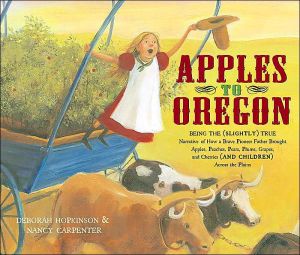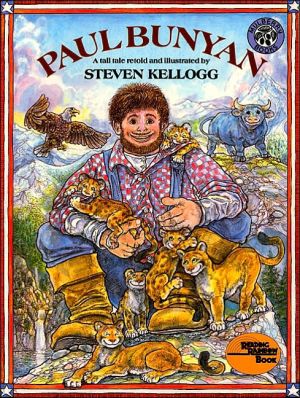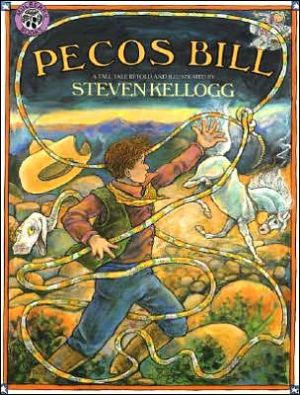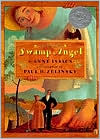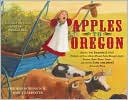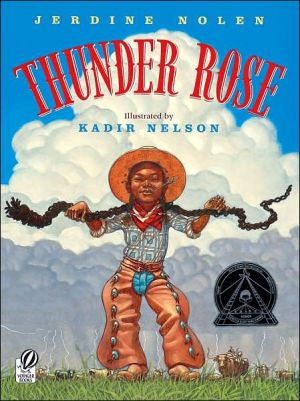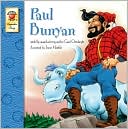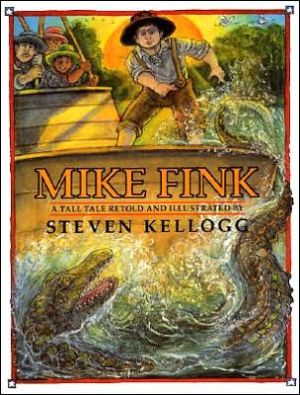Apples to Oregon
Apples, ho!\ When Papa decides to pull up roots and move from Iowa to Oregon, he can't bear to leave his precious apple trees behind. Or his peaches, plums, grapes, cherries, and pears. Oh, and he takes his family along too. But the trail is cruel — first there's a river to cross that's wider than Texas...and then there are hailstones as big as plums...and there's even a drought, sure to crisp the cherries. Those poor pippins! Luckily Delicious (the nonedible apple of Daddy's eye) is strong —...
Search in google:
Apples, ho!When Papa decides to pull up roots and move from Iowa to Oregon, he can't bear to leave his precious apple trees behind. Or his peaches, plums, grapes, cherries, and pears. Oh, and he takes his family along too. But the trail is cruel — first there's a river to cross that's wider than Texas...and then there are hailstones as big as plums...and there's even a drought, sure to crisp the cherries. Those poor pippins! Luckily Delicious (the nonedible apple of Daddy's eye) is strong — as young 'uns raised on apples are — and won't let anything stop her father's darling saps from tasting the sweet Oregon soil.Here's a hilarious tall tale — from the team that brought you Fannie in the Kitchen — that's loosely based on the life of a real fruiting pioneer.Apple FactsMore than 7,500 varieties of apples are grown throughout the world.About 2,500 varieties grow in the United States.The apple variety Delicious is the most widely grown in the United States.Apples are part of the rose family.The science of fruit growing is called pomology.Fresh apples float. That's because 25 percent of their volume is air.Cut an apple in half, across the core, and you'll see a star shape.It takes apple trees four to five years to produce their first fruit.It takes about thirty-six apples to make one gallon of apple cider.The New York Times - Stephanie DeutschIn lively, image-rich language, Delicious tells of rafting the baby trees across a perilous river; protecting them from wind and hail with skirts, bonnets and petticoats; finding water for them in an old boot; and fanning away Jack Frost with smoke from a campfire. Nancy Carpenter's bright illustrations capture the exuberant spirit and the humor as well as many details.
\ Stephanie DeutschIn lively, image-rich language, Delicious tells of rafting the baby trees across a perilous river; protecting them from wind and hail with skirts, bonnets and petticoats; finding water for them in an old boot; and fanning away Jack Frost with smoke from a campfire. Nancy Carpenter's bright illustrations capture the exuberant spirit and the humor as well as many details.\ — The New York Times\ \ \ \ \ Publishers WeeklyThe creators of Fannie in the Kitchen present another satisfying slice of Americana in this capricious caper, loosely based on a true story. "My daddy loved growin' apples. And when he got ready to pull up roots and leave Iowa for Oregon, he couldn't bear to leave his apple trees behind," states the vivacious young narrator, with the fitting name of Delicious. Her father builds two large wooden boxes, fills them with "good, wormy dirt" and fruit trees, and loads them onto a wagon. "Oh, and by the way, he took us along too," she adds. As the girl's colloquial account follows the family of 10 across country, Carpenter's oil paintings provide effervescent particulars, such as Daddy bowed out at the front of the wagon, leading the team of oxen, while Delicious, addressing the audience full-on, nearly misses her ride West. Carpenter's brushstrokes, both delicate and broad, plus her rubbery characters add up to a more rugged style than her fine line renderings in Fannie, yet the artwork conveys just as much humor. Youngsters will revel in the fact that it is only through the efforts of inventive and indefatigable Delicious that the precious cargo survives its journey-through hail, drought and frost-to Oregon, where father and daughter plant a successful orchard. Daddy has the delectable last word: "Delicious, you'll always be the apple of my eye." This tallish tale is sweet to the core. Ages 4-8. (Sept.) Copyright 2004 Reed Business Information.\ \ \ Children's LiteratureHold onto your hats and prepare for the "slightly true" story about how a very determined man had the "most daring adventure in the history of fruit." It was quite simple really; the narrator's daddy loved his fruit trees (especially the apples) so much that when it was decided that the family should travel to Oregon from their home in Iowa, he made plans to take hundred of his beloved trees with him. Thus it was that this extraordinary man and his family set off across the country with two covered wagons, one of which was filled with fruit trees. For the children it was a grand adventure, living like pioneers and sleeping under the stars. Of course, there was more than the usual number of problems to overcome. How, for example, was one to get the "nursery wagon" across the great Platte River? Daddy found a way, but it was his brave and generous children who made the feat possible. In fact daddy's family go through a great deal for those trees and one cannot help admiring them for their dedication to daddy's cause. A tall tale that is based on a true story, this book is sure to entertain the whole family. Fast paced and full of spirited oil paintings, it is perfect for reading aloud. In the back of the book, the author describes the real man who brought seven hundred plants and young fruit trees from Salem, Iowa to a farm just south of Portland, Oregon. 2004, Atheneum, Ages 4 to 8. \ —Marya Jansen-Gruber\ \ \ \ \ School Library JournalK-Gr 4-In this original tall tale, Delicious describes her family's journey from Iowa to Oregon in the 1800s. Daddy loves the idea of going west but he can't bear to leave his apple trees behind. He constructs two special wagons, fills them with "good, wormy dirt," and packs in hundreds of plants and trees. "Apples, ho!" he cries, and off they go. When they reach the Platte River-"wider than Texas, thicker than Momma's muskrat stew"-Delicious helps her father build a raft to ferry the seedlings-and the family-across. Everyone makes it to the other side, just barely. Before long, a hailstorm hits, scattering bonnets, petticoats, and even Daddy's drawers. Other larger-than-life challenges await the family, but inventive Delicious always manages to save the day. Soon, they're all floating down "the mighty Columbia." They plant those trees in Oregon soil, and everyone lives happily ever after. An author's note explains that this story is based loosely on Henderson Luelling, a pioneer who really did transport plants and fruit trees to Oregon in 1847. Hopkinson's version, of course, is just pure fun and make-believe. Carpenter's oil paintings are filled with vivid shades that reflect the changing scenery. Amusing details abound, and the slightly exaggerated humor of the pictures is in perfect balance with the tone of the text. The plucky heroine-wearing a bright red dress, white pinafore, and confident smile-often takes center stage. An entertaining choice for storytimes or an amusing supplement to units on westward expansion.-Roxanne Burg, Orange County Public Library, CA Copyright 2004 Reed Business Information.\ \ \ \ \ Kirkus ReviewsThe subtitle ("Being the [Slightly] True Narrative of How a Brave Pioneer Father Brought Apples, Peaches, Pears, Plums, Grapes, and Cherries [and Children] Across the Plains") sets the tone and describes the plot, but the flavor is in the folksy telling of this clever tall tale that humorously portrays a family's trek west from Iowa to Oregon to plant their father's fruit trees. His oldest daughter, Delicious, regales readers with her accounts of the many hazards and risks the family faces (eight children and mama) as they rescue Daddy's darlings, the young trees, from drowning in a river crossing, being pounded by hailstones, withering by drought, and then freezing by Jack Frost. Carpenter's illustrations paint hilarious touches, such as the scene where they use their clothing to protect the plants from hail, including Daddy's underwear. Endpaper maps trace their journey and the author's note states that the story is loosely based on a real pioneer, Henderson Luelling. The pun-filled text and puckish pictures by the team that created Fannie in the Kitchen (2001) spin a pip of a yarn that is just downright delicious. (Picture book. 4-8)\ \
